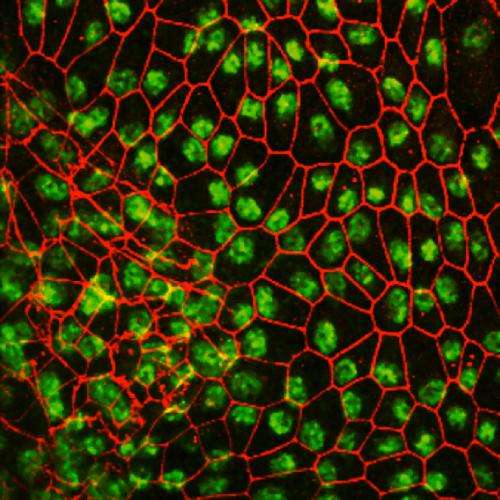Stem cell research could expand clinical use of regenerative human cells

Research led by a biology professor in the School of Science at Indiana University-Purdue University Indianapolis (IUPUI) has uncovered a method to produce retinal cells from regenerative human stem cells without the use of animal products, proteins or other foreign substances, which historically have limited the application of stem cells to treat disease and other human developmental disorders.
The study of human induced pluripotent stem cells (hiPSCs) has been pursued vigorously since they were first discovered in 2007 due to their ability to be manipulated into specific cell types. Scientists believe these cells hold considerable potential for cell replacement, disease modeling and pharmacological testing. However, clinical applications have been hindered by the fact that, to date, the cells have required animal products and proteins to grow and differentiate.
A research team led by Jason S. Meyer, Ph.D., assistant professor of biology, successfully differentiated hiPSCs in a lab environment—completely through chemical methods—to form neural retinal cell types (including photoreceptors and retinal ganglion cells). Tests have shown the cells function and grow just as efficiently as those cells produced through traditional methods.
"Not only were we able to develop these (hiPSC) cells into retinal cells, but we were able to do so in a system devoid of any animal cells and proteins," Meyer said. "Since these kinds of stem cells can be generated from a patient's own cells, there will be nothing the body will recognize as foreign."
In addition, this research should allow scientists to better reproduce these cells because they know exactly what components were included to spur growth and minimize or eliminate any variations, Meyer said. Furthermore, the cells function in a very similar fashion to human embryonic stem cells, but without controversial or immune rejection issues because they are derived from individual patients.
"This method could have a considerable impact on the treatment of retinal diseases such as age-related macular degeneration and forms of blindness with hereditary factors," Meyer said. "We hope this will help us understand what goes wrong when diseases arise and that we can use this method as platform for the development of new treatments or drug therapies."
"We're talking about bringing stem cells a significant step closer to clinical use," Meyer added.
Meyer, along with two graduate students, have worked for two years on this research with the help of an Indiana University Collaborative Research Grant and funding from the School of Science at IUPUI and the American Health Assistance Foundation.
The research will be published in the April edition of Stem Cells Translational Medicine. Co-authors include Akshayalakshmi Sridhar and Melissa M. Steward.
Meyer began researching hiPSCs while he was a post-doctoral research associate at the University of Wisconsin in Madison, where James Thomson, Ph.D., was one of two investigators to develop hiPSCs from adult cells in 2007. The other, Shinya Yamanaka, Ph.D, from Japan's Kyoto University, was awarded the Nobel Prize for Physiology or Medicine in 2012 for discovering the ability of mature cells to be reprogrammed into stem cells.

















